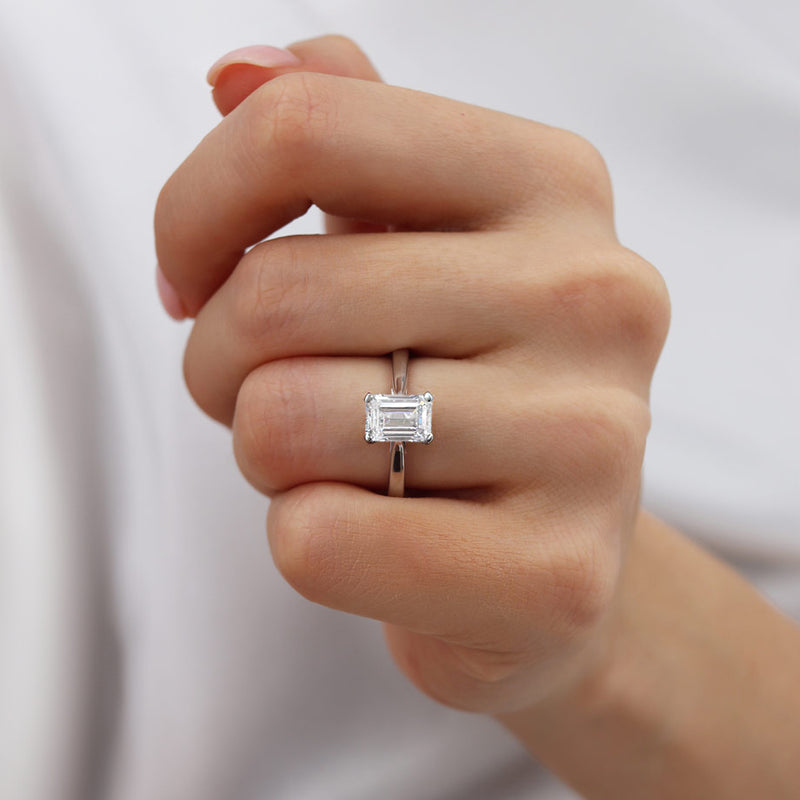The world of gemstones has developed altogether throughout the long term, with options in contrast to regular diamonds turning out to be progressively well known. Among the most prominent of these are moissanite diamond. Both proposition remarkable magnificence and brightness, yet they vary in a few key perspectives. This article means to give a thorough comparison among moissanite and lab-grown diamonds, assisting expected purchasers with pursuing an informed choice.
Grasping Moissanite
Moissanite is a gemstone that was originally discovered in 1893 by French chemist Henri Moissan in a meteorite cavity. The regular form of moissanite is incredibly rare, so the greater part of what is available today is lab-created. Moissanite is made out of silicon carbide and is known for its extraordinary fire, which alludes to the rainbow-like blazes of light that it discharges.
The Rise of Lab-Grown Diamonds
Lab-grown diamonds, otherwise called synthetic or man-made diamonds, are created in a controlled laboratory climate utilizing progressed mechanical processes that imitate the regular circumstances under which diamonds form in the World’s mantle. These diamonds are synthetically, genuinely, and optically indistinguishable from regular diamonds, pursuing them a well known decision for those looking for the look and feel of a diamond at a more affordable cost.
Appearance and Splendor
One of the essential contemplations while picking among moissanite and lab-grown diamonds is their appearance. Moissanite is prestigious for its splendor, frequently dominating normal and lab-grown diamonds because of its higher refractive file. This implies that moissanite disperses light into more colors than a diamond, making a more dynamic and red hot display. In any case, this serious fire can here and there make moissanite show up less like a diamond and more like a distinct gemstone.
Lab-grown diamonds, then again, display similar brightness as normal diamonds. Their radiance is in many cases portrayed as more unpretentious and exemplary, making them indistinguishable from mined diamonds to the undeveloped eye. For the individuals who want the immortal style of a diamond, lab-grown diamonds are the favored decision.
Hardness and Sturdiness
The hardness of a gemstone is estimated on the Mohs scale, which goes from 1 (mildest) to 10 (hardest). Diamonds, both regular and lab-grown, are the hardest known material, rating an ideal 10 on the Mohs scale. This excellent hardness makes them unimaginably sturdy and resistant to scratching, making them ideal for regular wear.
Moissanite is marginally gentler, with a rating of 9.25 on the Mohs scale. While this is still particularly hard and more strong than most other gemstones, it is not as resistant to scratches as a diamond. Notwithstanding, moissanite is harder than diamond regarding resistance to chipping and breaking, because of its different gem structure.
Color and Lucidity
Moissanite is for the most part available in close colorless grades, however it might show a slight yellow or grayish shade in bigger stones. This can be more articulated under specific lighting conditions. Be that as it may, propels in innovation have prompted the production of colorless moissanite, which intently looks like the presence of a diamond.
Lab-grown diamonds are reviewed on similar scale as regular diamonds for color and clearness. They are available in a scope of colors, from D (colorless) to Z (light yellow or brown), and can be found in an assortment of clearness grades. Top notch lab-grown diamonds can be practically indistinguishable from the most noteworthy grade regular diamonds.
Value Comparison
One of the main distinctions among moissanite and lab-grown diamonds is their cost. Moissanite is by and large considerably more affordable than lab-grown diamonds, making it an appealing choice for those on a careful spending plan. The cost of moissanite doesn’t differ altogether with size, while the expense of lab-grown diamonds increments with carat weight, similarly as with regular diamonds.
Lab-grown diamonds, while more affordable than their normal partners, are even more exorbitant than moissanite. Notwithstanding, for many purchasers, the allure of claiming a real diamond, regardless of whether it is lab-created, legitimizes the more exorbitant cost.
Ecological and Moral Contemplations
Both moissanite and lab-grown diamonds are viewed as more harmless to the ecosystem and morally sound options in contrast to mined diamonds. The creation of lab-grown diamonds requires fundamentally less energy and water than conventional diamond mining and doesn’t include the moral worries related with mining rehearses in specific locales.
Moissanite, being totally lab-created, likewise flaunts a negligible natural effect. Moreover, in light of the fact that it is not related with any form of mining, moissanite is liberated from the moral issues that can now and again be connected to the diamond business.
Conclusion:Which Would it be a good idea for you to Pick?
The decision among moissanite and lab diamonds at last boils down to individual inclination and priorities. In the event that you esteem extraordinary splendor and fire, and are searching for a spending plan cordial choice, moissanite might be the best decision for you. Its toughness and special appearance make it a champion gemstone by its own doing.
You may also like
-
Lab Created Diamonds in Frankfurt: The Future of Sparkle
-
Platinum versus Gold Rings with Lab-Grown Diamonds: A Far reaching Guide
-
The Appeal of Lab Grown Diamond Stud Earrings: A Cutting edge Curve on Exemplary Class
-
How Pawn Shops Price Items: A Comprehensive Guide
-
The Rise of Budget Lab-Grown Diamonds: Affordable Luxury

